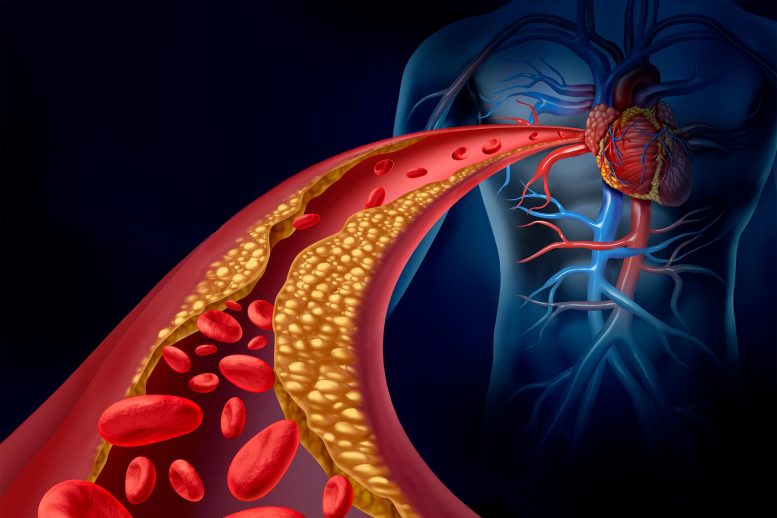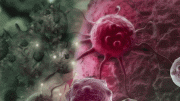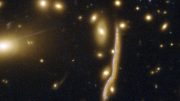
UCLA researchers have discovered a new step in how dietary cholesterol is metabolized in the intestines, potentially offering a new target for cholesterol treatment. This involves the Aster protein family, which plays a critical role in cholesterol absorption and processing. An experimental drug, AI-3d, targets these proteins and shows promise in inhibiting cholesterol absorption more effectively than current treatments.
Researchers Identify Previously Unknown Step in Cholesterol Absorption in the Gut
University of California, Los Angeles (UCLA) researchers have described a previously unknown step in the complex process by which dietary cholesterol is processed in the intestines before being released into the bloodstream – potentially revealing a new pathway to target in cholesterol treatment.
Experimental Drug Targets New Pathway
Although an existing drug and statins impact part of the process, an experimental drug being studied in UCLA research labs appears to specifically target the newfound pathway, possibly adding a new approach to the cholesterol management toolbox.
“Our results show that certain proteins in the Aster family play a critical role in moving cholesterol through the absorption and uptake process,” said Dr. Peter Tontonoz, a UCLA professor and researcher in Pathology and Laboratory Medicine and Biological Chemistry, senior author of an article in Science. “The Aster pathway appears to be a potentially attractive target for limiting intestinal cholesterol absorption and reducing levels of plasma cholesterol.”
Understanding Cholesterol Absorption
Cholesterol from food is absorbed by cells that line the inner surface of the intestines – enterocytes – where it is processed into droplets that eventually reach the bloodstream. But this journey involves a multistep process.
Free cholesterol is drawn into the cell’s plasma membrane – the external boundary of the cell – by a protein called NPC1L1. It then must move to another membranous network in the cell called the endoplasmic reticulum. This is where an enzyme called ACAT2 prepares the cholesterol for packaging and transport, in a process called esterification.
Scientists have not known how cholesterol finds its way into the endoplasmic reticulum to be acted upon by ACAT2. In this study, the researchers investigated the Aster protein family, which is known to bind cholesterol and help it move from one membrane to another.
“How cholesterol that enters the cell through NPC1L1 reaches the endoplasmic reticulum for esterification and regulation of cholesterol synthesis has been a longstanding mystery,” Tontonoz said. “We solve that mystery by showing that two members of the Aster protein family – Aster-B and -C – provide the link between NPC1L1 and ACAT2. By attaching to the plasma membrane, these proteins facilitate cholesterol transport to the endoplasmic reticulum.”
It was previously understood that NPC1L1 was a key player, but this study breaks the process into distinct steps. When NPC1L1 pulls cholesterol from the intestine into the enterocyte, it triggers the recruitment of the Aster proteins.
“We show that NPC1L1 and Asters play sequential, nonredundant roles in the delivery of dietary cholesterol from the intestinal lumen to the enterocyte ER (endoplasmic reticulum),” the authors write.
Potential for New Cholesterol Treatments
Additionally, the researchers found that the Aster proteins may provide a new treatment target for the control of cholesterol levels. When the actions of Aster-B and -C are blocked, cellular cholesterol stores are reduced, and the processing of cholesterol is impaired.
An existing drug, ezetimibe, targets NPC1L1, inhibits the activity of ACAT2, and reduces cholesterol absorption. It sometimes is used in combination with statins to reduce blood cholesterol. But ezetimibe doesn’t bind sufficiently to Asters to prevent all cholesterol transport. The research team, however, has identified an experimental drug – a small molecule called AI-3d – that potently inhibits Aster-A, -B, and -C. In a series of studies in both mice and human cells, the researchers found that the drug inhibits cholesterol absorption by directly targeting the effects of the Asters.
Reference: “Aster-dependent nonvesicular transport facilitates dietary cholesterol uptake” by Alessandra Ferrari, Emily Whang, Xu Xiao, John P. Kennelly, Beatriz Romartinez-Alonso, Julia J. Mack, Thomas Weston, Kai Chen, Youngjae Kim, Marcus J. Tol, Lara Bideyan, Alexander Nguyen, Yajing Gao, Liujuan Cui, Alexander H. Bedard, Jaspreet Sandhu, Stephen D. Lee, Louise Fairall, Kevin J. Williams, Wenxin Song, Priscilla Munguia, Robert A. Russell, Martin G. Martin, Michael E. Jung, Haibo Jiang, John W. R. Schwabe, Stephen G. Young and Peter Tontonoz, 10 November 2023, Science.
DOI: 10.1126/science.adf0966
This work was supported by the following: National Institutes of Health grant R01 DK126779 (to P.T.); National Institutes of Health grant P01 HL146358 (to S.G.Y.); Transatlantic Network of Excellence, Leducq Foundation, 19CDV04; American Diabetes Association Postdoctoral fellowship 1-19-PDF-043-RA and Ermenegildo Zegna Founder’s Scholarship 2017 (to A.F.); CDI Junior Faculty Career Development Award (CD-JFCD-07012019), CDI NIH K12 Junior Faculty Career Development Grant (CDI-K12-07012023), and Today’s and Tomorrow’s Children Fund Bridge Grant (CDI-TTCF-07012022) (to E.W.); UCSD-UCLA Diabetes Research Center (DK063491) (to E.W. and P.T.); American Heart Association Postdoctoral Fellowship 18POST34030388 to (X.X.); American Heart Association Postdoctoral Fellowship 903306 to (J.P.K.); the Damon Runyon Cancer Research Fellowship (DRG-2424-21) to (Y.G.); National Institutes of Health grant T32 DK007180 to (A.N.); and The National Collaborative Research Infrastructure Strategy (NCRIS), an Australian Government initiative, to the National Deuteration Facility in Australia.









Be the first to comment on "UCLA Cholesterol Absorption Breakthrough Could Lead to Innovative Treatments"